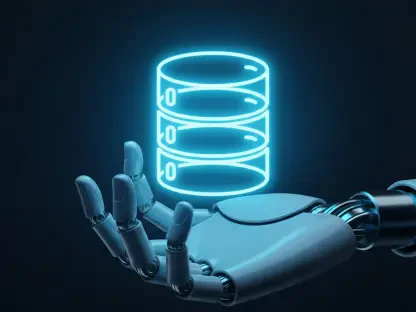I’m thrilled to sit down with Anand Naidu, a seasoned expert in development with a deep understanding of both frontend and backend technologies. With his extensive knowledge of various coding languages, Anand is uniquely positioned to shed light on the transformative power of AIOps in IT operations. Today, we’ll dive into how AIOps enables predictive monitoring, integrates with existing tools, leverages machine learning for proactive issue detection, and automates responses in complex hybrid cloud environments. Our conversation will unpack the practical steps and real-world impact of implementing AIOps to make IT systems smarter and more resilient.
How would you describe AIOps in simple terms to someone new to the concept?
AIOps, or Artificial Intelligence for IT Operations, is basically about using AI to make IT systems smarter and more efficient. Think of it as a super-smart assistant that analyzes tons of data from your IT environment—like logs, metrics, and alerts—to spot problems before they happen, figure out what’s causing issues, and even fix some of them automatically. It’s all about moving from reacting to problems to preventing them in the first place.
Why do you believe AIOps is becoming so critical for IT operations in today’s landscape?
IT systems today are incredibly complex, with apps, servers, and cloud environments all interconnected. Traditional monitoring often can’t keep up with the sheer volume of data or the speed of issues popping up. AIOps is critical because it uses machine learning to handle that complexity, predict failures, and reduce downtime. It’s a game-changer for businesses that can’t afford outages and need their IT to be proactive rather than just firefighting.
How does AIOps build on or differ from the traditional monitoring approaches we’ve relied on for years?
Traditional monitoring is mostly reactive—you set thresholds, and when something crosses them, you get an alert. It’s manual, siloed, and often leads to alert overload. AIOps, on the other hand, is predictive and integrative. It pulls data from all your tools, learns what’s normal for your system, and flags anomalies before they become problems. It’s like going from checking a dashboard every hour to having a system that warns you of a storm before the first raindrop falls.
When integrating AIOps with existing monitoring tools, what does that process look like in practice?
Integration starts with connecting AIOps to the tools you already use for monitoring applications, logs, or metrics. You set up connectors or agents to stream data into the AIOps platform. Then, you normalize that data—basically, standardize it so the AI can make sense of different formats. Finally, you enrich it with context, like how systems are connected or who owns what service, so the AI can prioritize issues better. It’s about making your current setup smarter without starting from scratch.
Can you walk us through the role of machine learning in predicting IT issues before they impact users?
Machine learning in AIOps analyzes historical and real-time data—like system logs or CPU usage—to identify patterns. For instance, if it notices that a spike in memory usage often leads to a crash, it can predict that outcome and alert you early. It uses techniques like time-series forecasting to spot trends or unsupervised learning to catch weird behavior that doesn’t fit the norm. The goal is to give you a heads-up so you can act before users even notice a glitch.
What are some of the biggest hurdles in training machine learning models for AIOps, and how do you overcome them?
One big hurdle is false positives—models flagging issues that aren’t real, which can erode trust. To tackle this, you validate models with labeled data and keep retraining them as your system evolves. Another challenge is data quality; if your logs or metrics are messy, the model struggles. Cleaning and normalizing data upfront helps. Lastly, balancing sensitivity is key—you don’t want to miss real issues, but you also don’t want constant noise. Using a mix of algorithms often strikes that balance.
How does AIOps help manage the chaos of alert storms in IT operations?
Alert storms—when you’re hit with hundreds of notifications from one underlying issue—are a nightmare. AIOps cuts through that noise by clustering related alerts, like grouping CPU spikes and slow queries on the same server. It uses AI to correlate these signals and pinpoint the root cause, so instead of drowning in alerts, you get a single, clear picture of what’s wrong. It’s like turning a shouting crowd into one person giving you the key details.
In hybrid cloud environments, what makes monitoring trickier, and how does AIOps address those challenges?
Hybrid cloud setups, with some systems on-premises and others in the cloud, are tough because data is scattered, and behaviors differ across environments. Monitoring can miss issues that span both worlds. AIOps helps by creating a unified view—using agents and event buses to collect data in real-time from everywhere. It stitches it together so you can see the full picture, catching problems whether they start in the cloud or on a local server.
Can you share a real-world scenario where AIOps not only detected an issue but also automated a fix?
Sure, imagine a Java-based microservice running in a Kubernetes cluster. AIOps detects a memory leak through telemetry data showing unusual spikes. It correlates related alerts, confirms the specific service, and triggers an automated response to restart the container. Meanwhile, it logs the incident and sends a quick message to the team via Slack for awareness. The issue is resolved without downtime, and no one had to manually step in—it’s all handled in minutes.
Looking ahead, what’s your forecast for the future of AIOps and its role in IT operations?
I see AIOps becoming the backbone of IT operations in the next few years. As systems get even more complex with edge computing and IoT, the need for predictive, automated solutions will only grow. I think we’ll see tighter integration with DevOps workflows, more advanced self-healing systems, and even greater trust in AI-driven decisions. Ultimately, AIOps will shift IT teams from managing crises to focusing on innovation, and that’s an exciting shift to watch.









